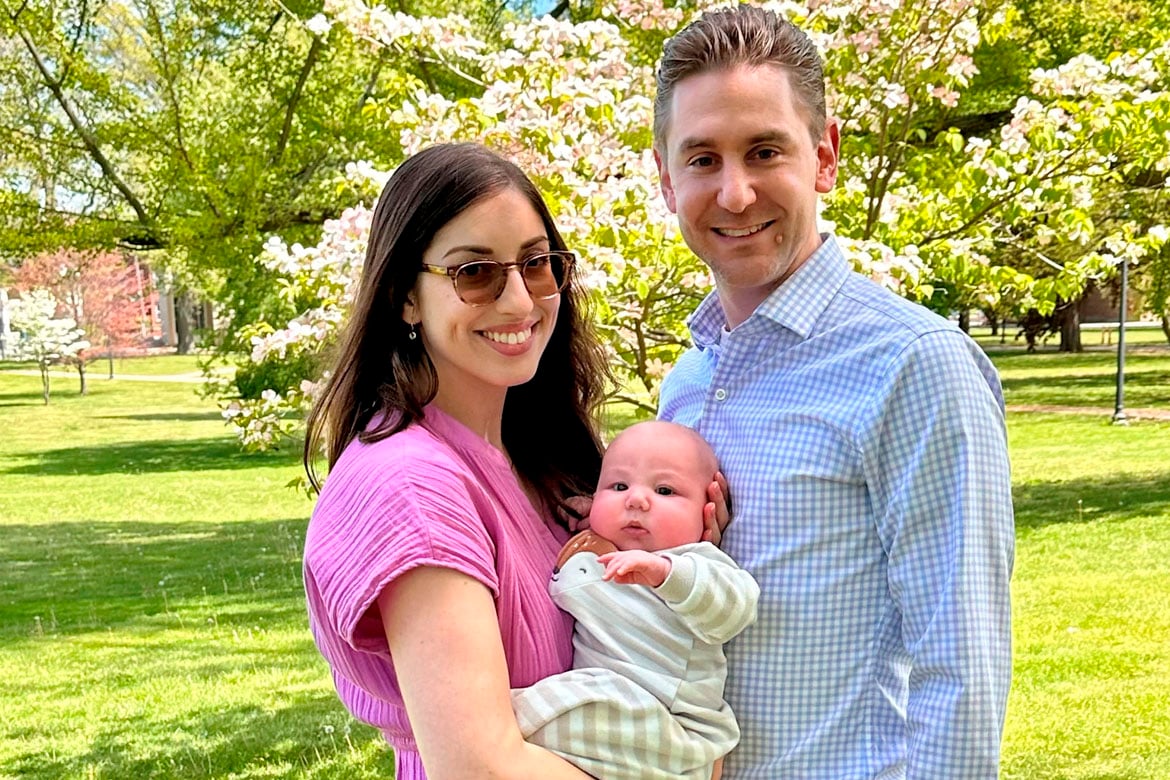It’s not unusual for physicians to say, in jest, that they live at the hospital. But it’s typically not a literal expression, and it doesn’t often evolve into a family affair.
Little about life is typical for AMA member Ray Lorenzoni, MD, and his wife, Kate, these days. As their 6-month-old son Emerson undergoes treatments for a rare form of leukemia—Infant B-Cell Acute Lymphoblastic Leukemia—Kate has taken up full-time residence at his bedside in a hospital room at Connecticut Children’s Hospital where Ray also works as a pediatric cardiologist.
After years of demanding residency and fellowship training schedules, this wasn’t the transition to normalcy the family was hoping for as Dr. Lorenzoni began his career as a practicing physician.
“As soon as I feel like I've found a new equilibrium the rug is pulled out from under me again,” Kate said. “The first couple months of having a baby are very difficult if your baby doesn't have cancer—it's just difficult. It's very hard. It's a whole new thing. We were in the middle of renovating our home, which is still being worked on, and Ray just started a new job.”
A jarring diagnosis
Eight weeks into Emerson’s life, something wasn’t right. Kate noticed purple splotches on his body, which the family later found out were called petechiae. Kate brought him to his pediatrician’s office. Emerson’s physician recommended he be taken to the emergency department for bloodwork. Within 12 hours, the baby was diagnosed with a rare form of pediatric leukemia—there are only about 100 cases of it in the country each year.
Dr. Lorenzoni had to process the information in rapid succession as both a physician and a parent.
“As a parent, you mourn the future that you expected… your first couple of years with your kid isn’t going to follow your plan,” he said. “We did that relatively quickly and then our approach became to take each day as it comes and understand that you know there are going to be bad days and Emerson's going feel crappy from the chemo. There's not a lot you can do about that as a parent or as a physician. That's been particularly tough for me.”
Emerson’s diagnosis came Feb. 21. Kate hasn’t been home since. Ray primarily splits time between Emerson’s hospital room and work. As an employed physician who started in October, less than six months before Emerson’s diagnosis, Dr. Lorenzoni doesn’t yet qualify for the Family and Medical Leave Act, but has had great support from the division of Pediatric Cardiology at Connecticut Children’s.
“Ray went back to work right away and has been a trooper through all of it,” Kate said. “He works a full day and is here during the evening as much as he can. Not asking anyone to change their shift or take his on-call weekends.”
Adapting to a new normal
The particular dynamics that occur when physicians become patients is well-trod territory. Less commonly discussed is the pain and perspective of a physician whose child becomes seriously ill.
Clinical understanding is generally an asset, but Dr. Lorenzoni does, at times, wish he could just be Ray.
“I'm trying to keep things as normal, professionally, as I can,” he said. “People will see me in fairly casual clothes because I’m visiting Emerson and they ask me if I’m going home or maybe to work out. I’ve had different levels of comfort in sharing information about our situation. I’m not always comfortable telling other people about the fact that my son is in the hospital for leukemia."
As of this article’s deadline, Emerson’s leukemia is in remission and, as his discomfort had subsided, he had regained the ability to smile. However, the road ahead is a long one. His total time in the hospital could be as long as nine months—barring any of the setbacks common to treatment of infantile leukemia—followed by about a year of outpatient chemotherapy.
Dr. Lorenzoni is up on all the literature on Emerson’s condition—as is Kate, who works as a psychotherapist. He’s also spoken with AMA colleagues around the country about the potential outcomes.
No family wants to endure this type of trauma or see their bundle of joy have to experience pain or discomfort. But Emerson’s circumstances have shown the importance of a strong partnership and the strength of the Lorenzonis’ relationship.
“When Emerson was diagnosed, we turned to each other and said if we have to go through this, we’re glad we're going through this with each other,” Kate said.




